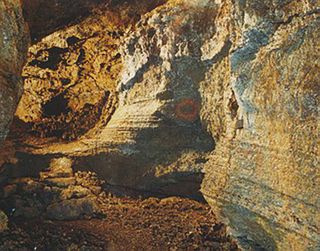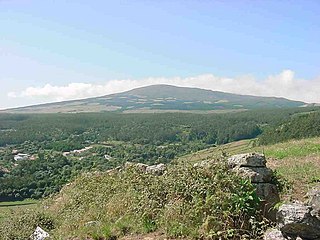
São Miguel Island, nicknamed "The Green Island", is the largest and most populous island in the Portuguese archipelago of the Azores. The island covers 760 km2 (290 sq mi) and has around 140,000 inhabitants, with 45,000 people residing in Ponta Delgada, the archipelago's largest city.
The Ponta Delgada Football Association is the governing body for association football and futsal competitions in the Portuguese former-district of Ponta Delgada. This organization regulates football in the Azorean islands of São Miguel and Santa Maria.

Angra do Heroísmo, or simply Angra, is a city and municipality on Terceira Island, Portugal, and one of the three capital cities of the Azores. Founded in 1478, Angra was historically the most important city in the Azores, as seat of the Bishop of the Azores, government entities, and having previously served as the capital city of Portugal, during the Liberal Wars. The population in 2011 was 35,402, in an area of 239.00 km². It was classified as a World Heritage site by UNESCO in 1983.

Feteira is a civil parish in the southern part of the municipality of Horta, on the island of Faial in the Portuguese archipelago of the Azores. The population in 2011 was 1,899, in an area of 14.46 km². It occupies the southern foothills of the Cabeço Gordo, along the coast. The name Feteira is derived from the Portuguese word for "fern", and indicates a "location of [many] ferns"; the name likely refers to the original colonists discovery of this area covered with ferns.

Santo António is a civil parish in the municipality of São Roque do Pico on the northern coast of the island of Pico in the Portuguese archipelago of the Azores. The population in 2011 was 815 in an area of approximately 32.03 square kilometres (12.37 sq mi).

Quatro Ribeiras is a civil parish in the municipality of Praia da Vitoria on the northern coast of the Portuguese island of Terceira in the Azores. The population in 2011 was 394, in an area of 12.83 km². It is the least populous parish in the municipality. It contains the localities Boqueiro, Canada do Cruzeiro, Canada do Saco, Canada do Velho, Farroco, Quatro Ribeiras and Rebentão do Bom Jesus.

Ribeira Grande is a municipality in the northern part of the island of São Miguel in the Portuguese Azores. The population in 2011 was 32,112, in an area of 180.15 km². The municipal seat is located in the civil parish of Matriz, with a population of about 4000 inhabitants, part of the urbanized core of what is commonly referred to as the city of Ribeira Grande.

Povoação is a municipality located in the southeastern corner of the island of São Miguel in the Portuguese archipelago of the Azores. The population in 2011 was 6,327, in an area of 106.41 km².

Paul is a concelho (municipality) of Cape Verde. Situated in the northeastern part of the island of Santo Antão, it covers 7% of the island area, and is home to 16% of its population. Its seat is the town Pombas.

Gruta do Natal, also known as Galeria Negra or Gruta do Cavalo, is a cave system in municipality of Praia da Vitória, on the island of Terceira in Portuguese archipelago of the Azores.
Gruta das Agulhas is a cave located along the promontory of Ponta dos Coelhos, in the Bay of Refugo, in the civil parish of Porto Judeu, in the municipality of Angra do Heroísmo, the Portuguese archipelago of the Azores.

The Nature Park of Faial, or simply or Nature Park of Faial (PNF) developed from the intention of better managing the protected areas of the island of Faial, and was instituted by the Secretaria Regional do Ambiente e do Mar, of the Autonomous Regional Government of the Azores.

The Nature Park of Terceira (Portuguese: Parque Natural de Terceira, or simply the Terceira Nature Park developed from the intention of better managing the protected areas of the island of Terceira, and was instituted by the Secretaria Regional do Ambiente e do Mar, of the Autonomous Regional Government of the Azores. It includes an area of approximately 22% of the island classified under the International Union for Conservation of Nature's Nature Reserve designation.

The Azores Geopark is a network of 121 geographically-dispersed sites of geographic heritage and marine areas that covers the nine volcanic islands of the archipelago of the Azores. This network is managed by the Azores Geopark Association, a non-profit association, with its headquarters in Horta on the island of Faial, established 19 May 2010. It is part of the European Geoparks Network and the UNESCO-assisted Global Geoparks Network. The Association's mission is to ensure the geological conservation, environmental education and sustainable development, while promoting the well-being of the population and a respect for the environment.

The Gruta do Carvão is an ancient lava tube located on the outskirts of the municipality of Ponta Delgada on the island of São Miguel in the Portuguese archipelago of the Azores.




















